It feels silly to write about the application of certain camouflage patterns in winter time when it has nearly 20°C outside and spring is in full blossom. But here I am, working off my material, that has been piling up in the recent months. In the end it is winter somewhere on this planet in this very moment, so why would I not write about it.
As some of you might know, I already did a comparative test of regular camouflage patterns during the winter of 2014/15. Back then I was working with the theoretical assumption that regular troops might find themselves in the situation of being deployed in a snow environment without having access to winter camouflage patterns. If you are interested in this methodological definitions and limitations I would kindly ask you to read the other review first.
With that being said I want to go immediately in medias res and give you an idea about this particular review.
Patterns and colors being used in this review
First of all let me say that this time there will be no cloths. I had four colorways at my disposal and am able to give you a human silhouette this time.
Camouflage
- Multicam/MTP
- PenCott Greenzone
- SloCam
Solid Colors
- Jungle Green by Helikon (dark, nearly grey olive)
- Ranger Green by UF PRO (grass green, close to original OD)
Scenarios
Since some of the locations from last time changed due to deforestation, or were just not accessible because of the snow, I decided to go with two scenarios: One being an open sky field with a diverse ground covering, and the other being directly in the forest with a closed foliage roof.
I made three pictures of each pattern/color: standing, kneeling and lying. The distance varied between 20-30m. Another thing worth mentioning: I did not meddle with the pictures! The only editing done was a lens correction to straighten the picture out, as well as adding my Pine Survey logo.
So here we go!
Scenario 1 – Open field with ground cover
At the very first location I was in the open of a forest clearing, with a diverse floor covering and a heavy snow layer.
Solid Colors
The first attempt was photographed with my Jungle Green Helikon Softshell and my Ranger Green P-40 pants by UF PRO. The distance between me and the camera is about 30m – it appears a little bit more on the pictures since I was taking the pictures with the wide angle 18mm setting of my lens.

solid color in a winter setting
As you can see the combination of this two colors resulted in a quite dark silhouette of mine, which can be easily spotted while standing.

kneeling position with a solid color
This picture rapidly changes as soon as I am in a kneeling position. At that point it is much harder to spot me against the dark green backdrop of the tree behind of me.

In the prone position
In the prone position I vanish completely. No more words needed.
SloCam
At first I changed into my SloCam fatigues. During my last test SloCam performed surprisingly good in winter conditions, due to its high contrast and colorway.

SloCam in the open field
In the open field, and because of its high contrast in this light and the snow, the appearance can be compared to the solid colors. The dark colors of SloCam resulted in a dark silhouette while standing.

Kneeling position – SloCam
In the kneeling position the situation changed just like with the solid colors. Only this time the pattern enhanced the disruption of my silhouette against the backdrop.

Prone position – SloCam
While proning, I disappeared completely out of sight. Again… no words needed.
Multicam
As some of you might remember, Multicam performed quite well in a winter environment during my last test. The actual brightness of the pattern and the colorway is being criticized by me on a regular basis, but I have to give the pattern credit in snow environments here.

Multicam in the open field
From the four patterns/colors it is the one that appears the most natural in the open field and in front of the tree. You can still see the silhouette, but the colors fade better with the back than the others.

Kneeling position – Multicam
The kneeling position results in a good concealment just like the other patterns.

Prone position – Multicam
Again, the prone is without need of comment.
PenCott Greenzone
Grenzone performs similar to SloCam in this particular scenario. One might think it is too green in this situation but just like SloCam the darkness against the high white contrast gives my silhouette away, not the colors themselves.
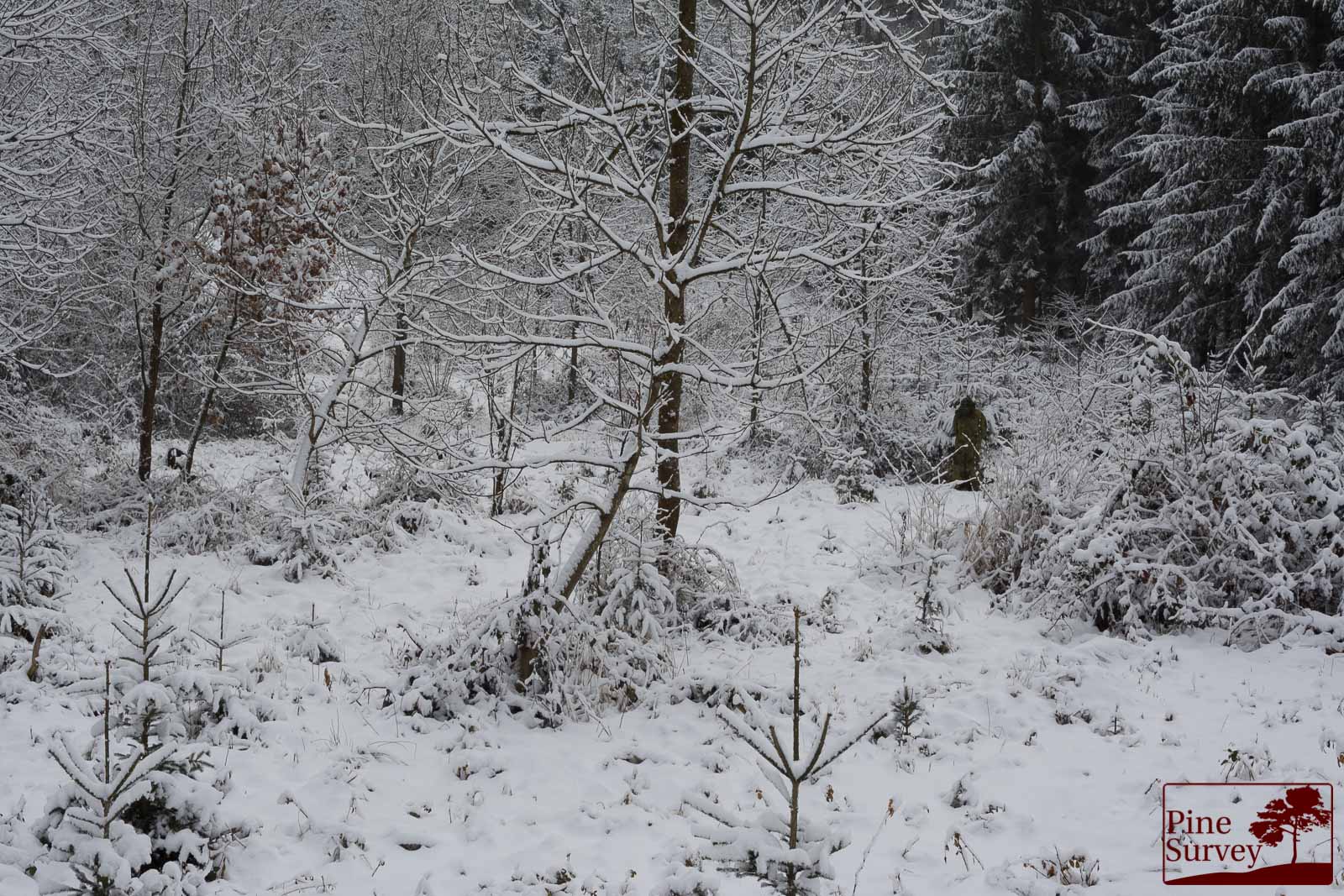
PenCott Greenzone in the open winter field
It is however brighter than SloCam and therefore performs slightly better, which can be seen in the kneeling position.
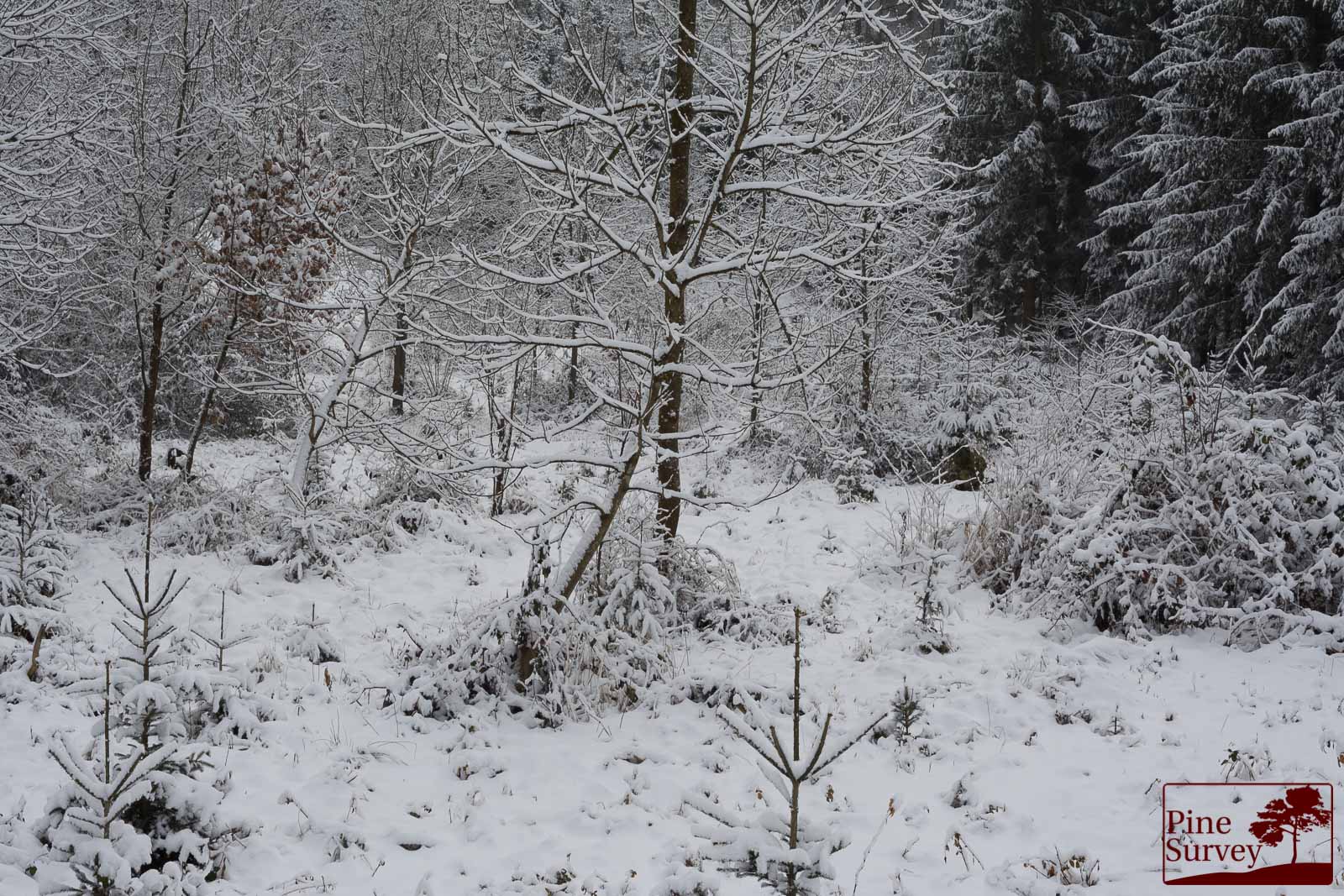
Kneeling position – PenCott Greenzone
During the prone position the concealment is flawless, just like the other colors/patterns

Prone position – PenCott Greenzone
Scenario 2 – forest with a closed foliage roof
The second location should be well known by now from my previous camouflage reviews. It is a part of a needle forest with a closed foliage roof, but with very little ground cover. The distance to the camera is about 20m.
PenCott Greenzone
The last time PenCott Greenzone performed surprisingly well in this particular location and it did so this time as well. The macro elements of the pattern create an organic shape, that fades well with the trees. Only the bright background makes the silhouette clearly visible. If I would have been standing directly in front of the tree instead of next to it, the effect would have been even more apparent.
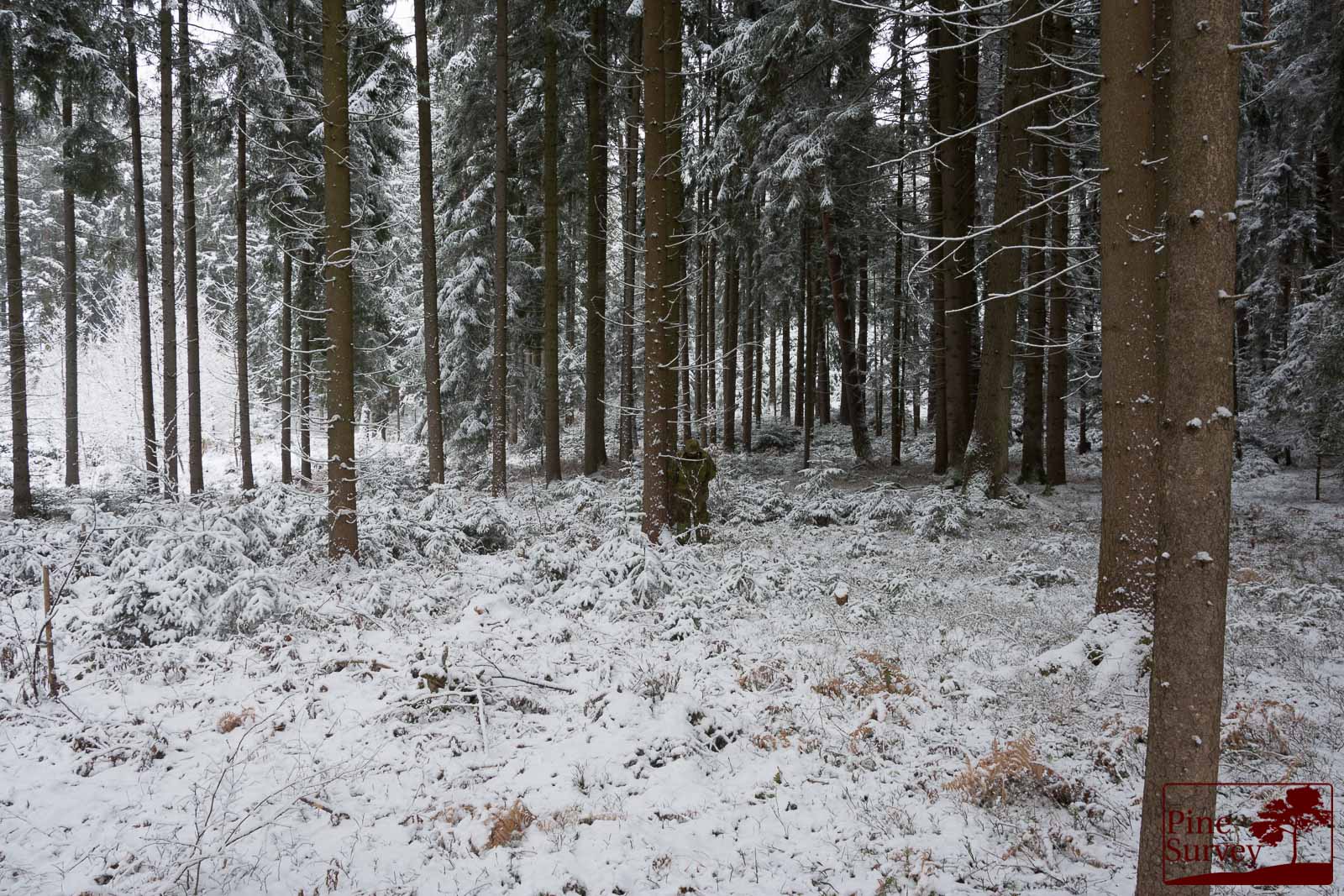
PenCott Greenzone in the winter forest
In the kneeling position PenCott Greenzone fades into the background even if it is snowcovered. The brown branches of the undergrowth and the evergreen elements of the forest help in this regard.

Kneeling position – PenCott Greenzone
At this point of the review it should be obvious for every reader that lying on the floor has the same result for every color and pattern. Just like at the first location the second one offers enough ground cover to conceal my silhouette completely or at least enough to disappear.

Prone position – PenCott Greenzone
SloCam
Because of the different light settings in this location as well as the closer distance to the camera, the elements of the SloCam pattern were much more visible during Scenario 2.

SloCam in the winter forest
The silhouette is clearly visible, because of the darker colorway of the pattern.

Kneeling position – SloCam
While kneeling the form of the body is broken up and it is harder to spot my human shape. Since SloCam is darker than Greenzone it is being spotted a little bit faster in this setting.

Prone position – SloCam
In the prone it makes no difference anymore. The concealment is there.
Multicam
Multicam is quite strong in this scenario. Because of the brightness of the pattern, which would be of disadvantage during all the other three seasons, it is able to perform well here. While standing the khaki and brown elements harmonize well with the surroundings.
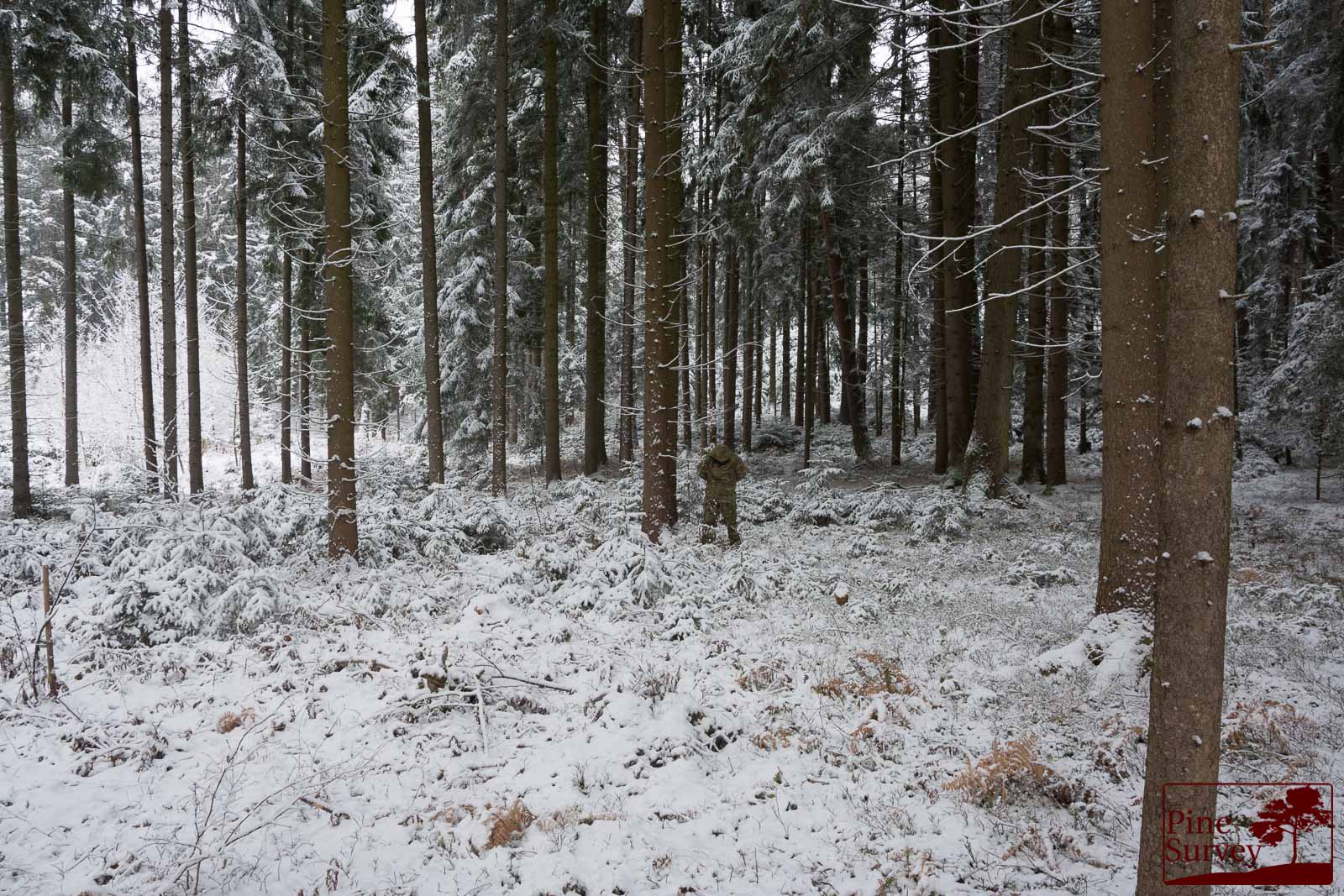
Multicam in the winter forest
It even gets better in the kneeling positions. While the other colors and patterns still appear as a dark blur, Multicam seems to vanish in this setting.
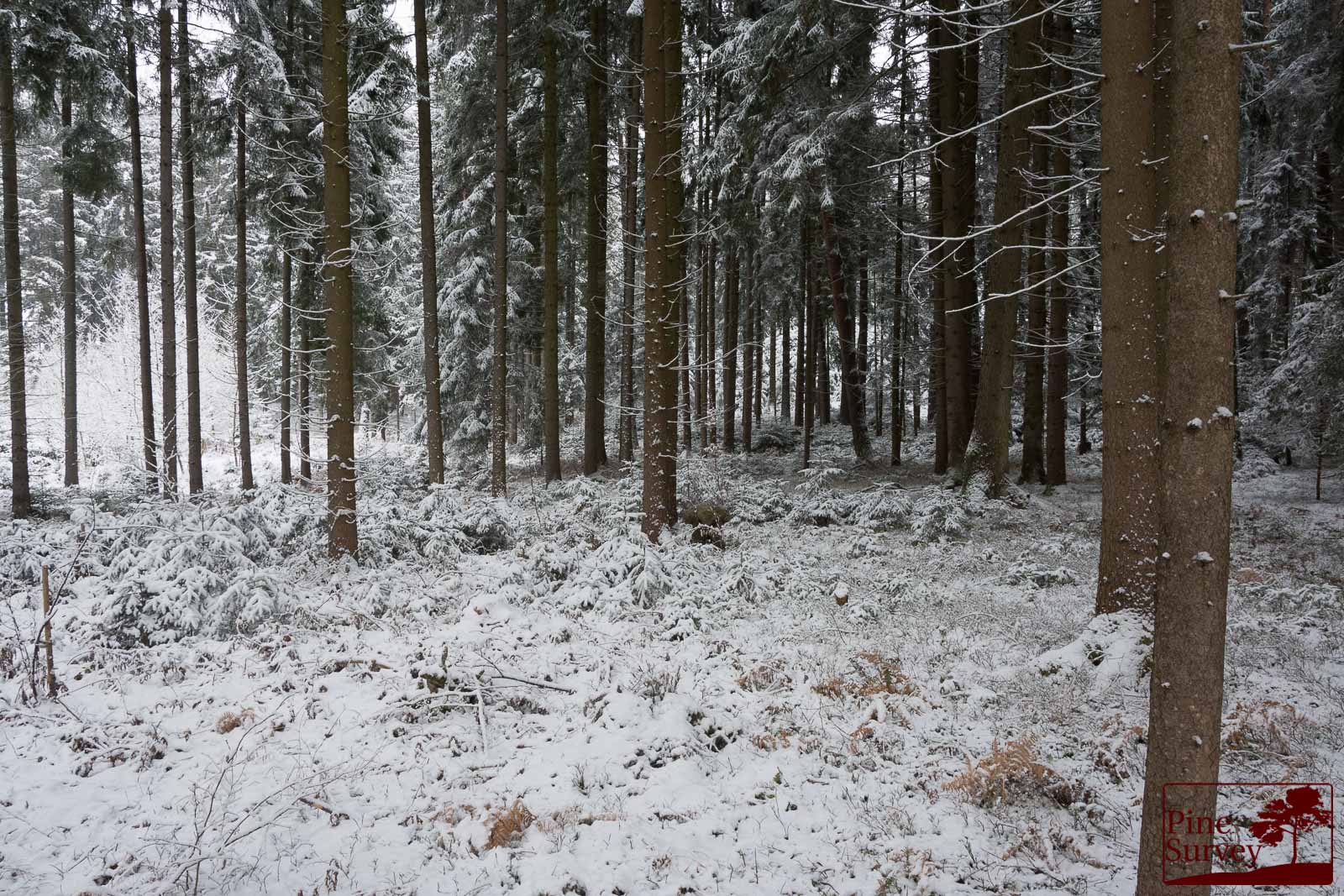
Kneeling position – Multicam
Again: Lying on the floor – perfect concealment in this situation.

Prone position – Multicam
Solid Color
The two shades of green are in an obvious disadvantage during scenario 2. In combination they appear too dark, which results in a clear human silhouette while standing. Since there are no other dark areas in the vicinity comparable to the jungle and ranger green, they make my human shape stand out very clearly.

Solid color in the winter woods
This does not change while kneeling, although it is getting better.

Kneeling position – solid color
Even during the prone there is still something off in the picture, that would encourage an attentive person to look twice.

Conclusion
So what do these pictures tell us in the end? As written before, my aim was to see how certain camouflage patterns – and in this review also one solid color – perform outside of their comfort zone.
In my previous review I was able to show, that PenCott Greenzone performs much better in a winter setting than one might actually think. Also it turned out that SloCam is more efficient as a “universal” pattern than Multicam, and that the latter performs quite good in Central Europe (although only in winter time).
This review was hopefully able to underline my past findings, while adding the insight of the performance of a solid color as well. With the exception of Multicam, all of the patterns and colors appear to be quite dark in a full snow environment, giving away the human silhouette if no proper cover is being found. As soon as the simple rules of tactical movement are applied (I am sorry I have no better terminology than that) the situation changes rapidly: In the kneeling as well as the prone position, all of the tested colors and patterns are starting to work.
The open field was a dead give away for all the candidates, although PenCott Greenzone and Multicam managed to exceed the others.
Of course this depends on the particular situation and the level of snow layers. Last time I showed you a picture of me in my Greenzone pants on New Year’s morning. With that I wanted to make a point that Greenzone is not necessarily a 3 season pattern.

PenCott Greenzone in January 2014
I have a similar picture of mine with my SloCam pants, which was taken during the Christmas holidays. It clearly shows the performance of SloCam during a diverse winter setting.

SloCam – Christmas 2015
With that being said I will leave all this pictures for you to decide for yourself. I sincerely hope I was able to give you another interesting read! Until next time!

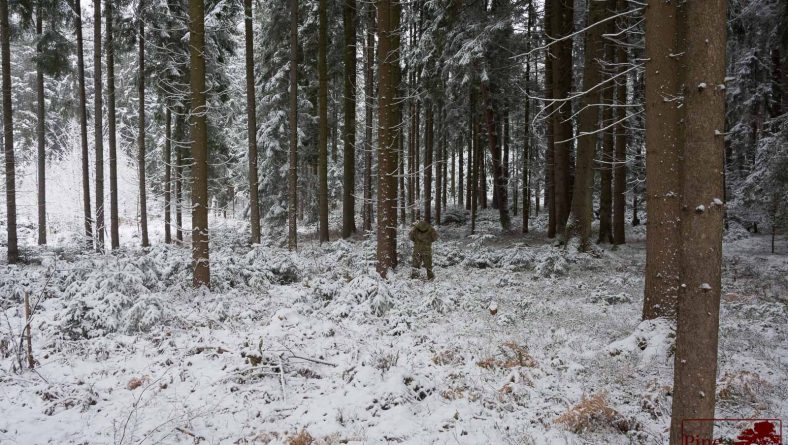
One Response Comment